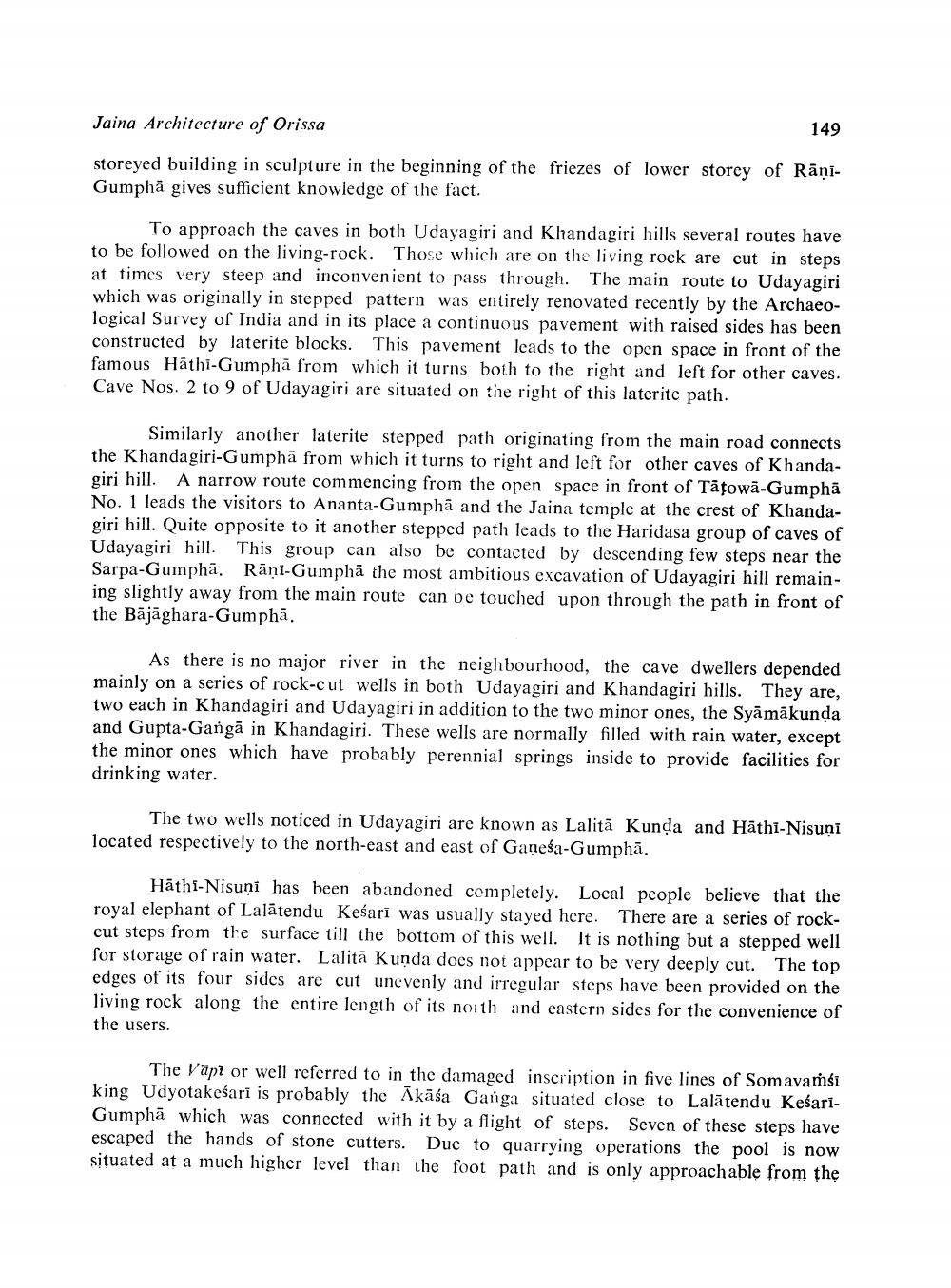________________
Jaina Architecture of Orissa
149
storeyed building in sculpture in the beginning of the friezes of lower storey of RāņiGumpha gives sufficient knowledge of the fact.
To approach the caves in both Udayagiri and Khandagiri hills several routes have to be followed on the living-rock. Those which are on the living rock are cut in steps at times very steep and inconvenient to pass through. The main route to Udayagiri which was originally in stepped pattern was entirely renovated recently by the Archaeological Survey of India and in its place a continuous pavement with raised sides has been constructed by laterite blocks. This pavement leads to the open space in front of the famous Hathi-Gumphā from which it turns both to the right and left for other caves. Cave Nos. 2 to 9 of Udayagiri are situated on the right of this laterite path.
Similarly another laterite stepped path originating from the main road connects the Khandagiri-Gumph, from which it turns to right and left for other caves of Khandagiri hill. A narrow route commencing from the open space in front of Tātowā-Gumphā No. 1 leads the visitors to Ananta-Gumpha and the Jaina temple at the crest of Khandagiri hill. Quite opposite to it another stepped path leads to the Haridasa group of caves of Udayagiri hill. This group can also be contacted by descending few steps near the Sarpa-Gumphā Rāni-Gumphā the most ambitious excavation of Udayagiri hill remaining slightly away from the main route can be touched upon through the path in front of the Bājāghara-Gumphā.
As there is no major river in the neighbourhood, the cave dwellers depended mainly on a series of rock-cut wells in both Udayagiri and Khandagiri hills. They are, two each in Khandagiri and Udayagiri in addition to the two minor ones, the Syāmākunda and Gupta-Gangā in Khandagiri. These wells are normally filled with rain water, except the minor ones which have probably perennial springs inside to provide facilities for drinking water.
The two wells noticed in Udayagiri are known as Lalitā Kunda and Hāthi-Nisuņi located respectively to the north-east and east of Ganesa-Gumphā.
Hāthi-Nisuni has been abandoned completely. Local people believe that the royal elephant of Lalātendu Keśarī was usually stayed here. There are a series of rockcut steps from the surface till the bottom of this well. It is nothing but a stepped well for storage of rain water. Lalitā Kunda does not appear to be very deeply cut. The top edges of its four sides are cut uncvenly and irregular steps have been provided on the living rock along the entire length of its noith and eastern sides for the convenience of the users.
The Vāpi or well referred to in the damaged inscription in five lines of Somavamsi king Udyotakeśari is probably the Ākāśa Ganga situated close to Lalātendu KeśariGumphā which was connected with it by a flight of steps. Seven of these steps have escaped the hands of stone cutters. Due to quarrying operations the pool is now situated at a much higher level than the foot path and is only approach able from the




